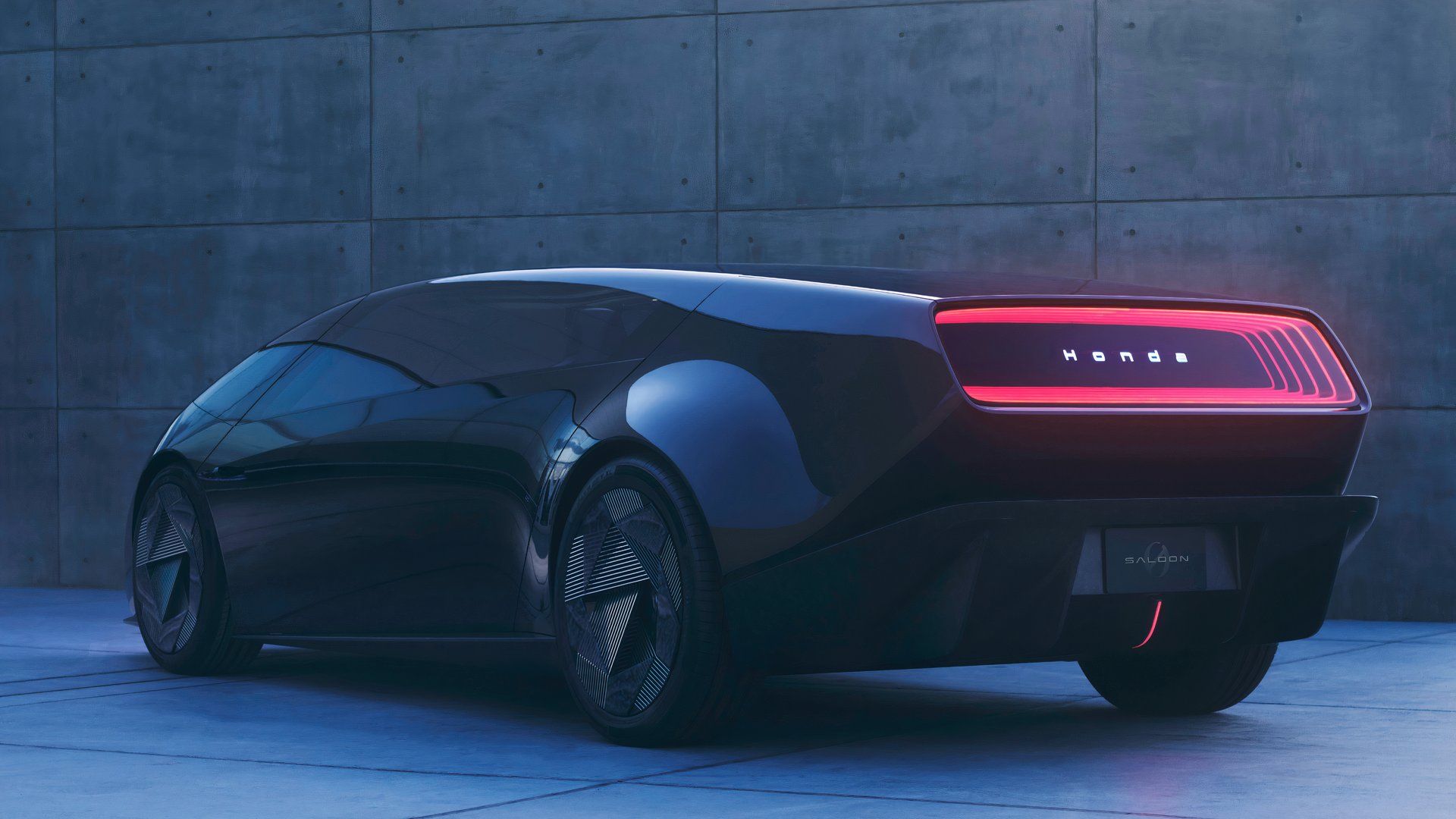What’s that new battery that uses graphite that the military is using?With all the environmental laws in California, a new kind of battery will be invented before any mining gets done there (semi-joking)! Endless surveys and studies.
Extra, Extra....Read All About It!
- Thread starter Harris005
- Start date
-
 From all of us at Scout Motors, welcome to the Scout Community! We created this community to provide Scout vehicle owners, enthusiasts, and curiosity seekers with a place to engage in discussion, suggestions, stories, and connections. Supportive communities are sometimes hard to find, but we're determined to turn this into one.
From all of us at Scout Motors, welcome to the Scout Community! We created this community to provide Scout vehicle owners, enthusiasts, and curiosity seekers with a place to engage in discussion, suggestions, stories, and connections. Supportive communities are sometimes hard to find, but we're determined to turn this into one.
Additionally, Scout Motors wants to hear your feedback and speak directly to the rabid community of owners as unique as America. We'll use the Scout Community to deliver news and information on events and launch updates directly to the group. Although the start of production is anticipated in 2026, many new developments and milestones will occur in the interim. We plan to share them with you on this site and look for your feedback and suggestions.
How will the Scout Community be run? Think of it this way: this place is your favorite local hangout. We want you to enjoy the atmosphere, talk to people who share similar interests, request and receive advice, and generally have an enjoyable time. The Scout Community should be a highlight of your day. We want you to tell stories, share photos, spread your knowledge, and tell us how Scout can deliver great products and experiences. Along the way, Scout Motors will share our journey to production with you.
Scout is all about respect. We respect our heritage. We respect the land and outdoors. We respect each other. Every person should feel safe, included, and welcomed in the Scout Community. Being kind and courteous to the other forum members is non-negotiable. Friendly debates are welcomed and often produce great outcomes, but we don't want things to get too rowdy. Please take a moment to consider what you post, especially if you think it may insult others. We'll do our best to encourage friendly discourse and to keep the discussions flowing.
So, welcome to the Scout Community! We encourage you to check back regularly as we plan to engage our members, share teasers, and participate in discussions. The world needs Scouts™. Let's get going.
We are Scout Motors.
You are using an out of date browser. It may not display this or other websites correctly.
You should upgrade or use an alternative browser.
You should upgrade or use an alternative browser.
Haha. Yeah I hear you, but that would put them in quite the pickle at the same time. If they can help America move to EV powered vehicles which they have been championing for years, but choose not to, then thats also a bad look for a state that claims to be forward thinking and environmentally conscious.With all the environmental laws in California, a new kind of battery will be invented before any mining gets done there (semi-joking)! Endless surveys and studies.
That deposit alone has enough lithium to build an EV for every American home.
Say what you will about Gavin Newsom but he is a capitalist at heart, and the article mentions his remark about the Salton Sea being "The Saudi Arabia of Lithium." so it sounds like he is ready to get rich with his buddies.
Its worth mentioning that both deposits I linked to are located on BLM land.
Thats federally controlled, Right?
So if the curent administration wants it done, it most likely will be. They are already using the Wartime power to expedite mining of other rare earth minerals on Federal land.
[The order gives Defense Secretary Pete Hegseth, in consultation with other executive branch agency heads, the authority to use the Defense Production Act to facilitate the advancement of domestic mineral production.
The act, which was passed in 1950 in response to production needs during the Korean War, gives the government more control during emergencies to direct industrial production. Trump invoked it in 2020 at the onset of the Covid-19 pandemic.
The executive order also directs relevant department and agency heads, in coordination with the chair of the National Energy Dominance Council, to identify and expedite priority mineral production projects that can be “immediately approved” or immediately issued permits.
“It is imperative for our national security that the United States take immediate action to facilitate domestic mineral production to the maximum possible extent,” the order states.
Within 10 days, Trump calls for Interior Secretary Doug Burgum to provide a list of all federal lands “known to hold mineral deposits and reserves” and “prioritize mineral production and mining related purposes as the primary land uses in these areas, consistent with applicable law.”]
Link to source
You are close enough. Graphene batteries are supposed to disrupt the market in another decade or two.What’s that new battery that uses graphite that the military is using?

Graphene batteries set to disrupt the EV market by mid-2030s
Graphene looks set to disrupt the EV batteries market by the mid-2030s, according to a new AI forecasting platform using patent data.
Yes! That’s what it is.You are close enough. Graphene batteries are supposed to disrupt the market in another decade or two.

Graphene batteries set to disrupt the EV market by mid-2030s
Graphene looks set to disrupt the EV batteries market by the mid-2030s, according to a new AI forecasting platform using patent data.www.energymonitor.ai
I run them in my RC cars but I tape over the batteries since were only supposed to be using LiPo’s in my race league.
Last edited:
Very cool, and naughty lol.Yes! That’s what it is.
I run them in my RC cars but I tape over the batteries since were only supposed to be using LiPo’s in my race league.
I didnt realize they were already in the RC and drone world.
We have a bunch of Traxxas 1:10 scale crawlers in the garage collecting dust, and I havent been keeping up with that industry.
Very exciting stuff.
The only time i was caught cheating when i used iron tire weights to weight the front of my 1/10 short course truck down for jumps. I received a 5 day racing ban.Very cool, and naughty lol.
I didnt realize they were already in the RC and drone world.
We have a bunch of Traxxas 1:10 scale crawlers in the garage collecting dust, and I havent been keeping up with that industry.
Very exciting stuff.
I used to believe that but in light of recent changes it will be interesting.With all the environmental laws in California, a new kind of battery will be invented before any mining gets done there (semi-joking)! Endless surveys and studies.
I still think a new sodium base would be good. Keep rising ocean levels down, the clean water could be used for arid countries to produce crop farms and would be a win win for developing coastal countries. More plants, more food/less famine and the ozone would benefit. Back to being the circle of life

BMW M Now Stands For Misleading With The M2 Dakar
BMW is just being mean with an M2 this year, and its M3 Wagon prank is just as far offside.
I had some a fairly long time ago for RC - but I don't know if they are the same thing that is being discussed now. I think it was mostly marketing, maybe a little graphine in the cathode or anode.
RC batteries are a bit different than EV batteries. They are charged hard, run hard - and nobody expects a thousand charge cycles. When I was much younger and was a sponsored driver - I had enough batteries that I had one per heat (and practice runs) for a race day. I raced 30+ weekends a year - so I doubt I cycled any battery 100 times before it was retired. New batteries have a LOT more power, so it is probably less of a thing - but then every fraction of a second of performance mattered. Cells were tested to build balanced packs - and as a sponsored driver, I got hotter packs that a non-sponsored driver could buy. Motors were probably tested as well, and we got the top ones.
RC batteries are a bit different than EV batteries. They are charged hard, run hard - and nobody expects a thousand charge cycles. When I was much younger and was a sponsored driver - I had enough batteries that I had one per heat (and practice runs) for a race day. I raced 30+ weekends a year - so I doubt I cycled any battery 100 times before it was retired. New batteries have a LOT more power, so it is probably less of a thing - but then every fraction of a second of performance mattered. Cells were tested to build balanced packs - and as a sponsored driver, I got hotter packs that a non-sponsored driver could buy. Motors were probably tested as well, and we got the top ones.

What Honda’s Solid-State Battery Breakthrough Tells About The Future Of EV Tech
Honda has started production on solid-state batteries. But will they actually live up to the hype?
What Honda’s Solid-State Battery Breakthrough Tells About The Future Of EV Tech
Andrew Koopman
33–42 minutes
Late last year, Honda revealed that its solid-state battery pilot production line is up and running, with actual production slated to start a couple of months ago in January 2025. This facility, located at the company’s Sakura plant in Japan, is not just an R&D lab. It’s producing actual solid-state battery prototypes with the goal of scaling them for use in future EVs.
While the technology is still far from ready for mass production, Honda’s ability to move beyond simulations and into physical manufacturing could signal a turning point. Not just for the company, but for the EV industry as a whole.
In order to give you the most up-to-date and accurate information possible, the data used to compile this article was sourced from Honda and other authoritative sources.

Honda may become the first car company to get an all-solid-state battery into an actual car. Here is how they're doing it.
Honda's Solid-State Battery Factory Is Already Operating
The Pilot Line Is Ahead Of Schedule Compared To Rivals
Other Automakers Are Still Stuck In The Planning Stage

While Honda is now producing physical battery cells on a pilot line, most of its competitors remain at earlier stages of development. Toyota, for example, has announced that it plans to introduce solid-state batteries by 2027, but its efforts remain largely experimental, focused more on prototype vehicles and lab-based testing. Similarly, companies like Ford, BMW, and Volkswagen have all entered partnerships with battery startups or research institutions, but are lagging behind Honda when it comes to actual production.
Solid-state battery technology is an unfamiliar territory, but thankfully it's an easy topic to be well-informed on.
The Solid-State Hype Has Gone On For Too Long Without Results
Automakers Have Relied Too Heavily On Theoretical Test Results

For years, announcements about SSB advancements have leaned heavily on lab-based metrics like energy density figures, cycle life projections, and charging time estimates. Automakers have frequently touted promising test data, like Toyota's 745-mile range thanks to SSBs, suggesting breakthroughs were just around the corner. However, translating those figures into real-life batteries that can be produced reliably and at scale has proven to be far more difficult.
Battery Startups And Partnerships Have Created More Noise Than Progress

Over the past several years, automakers have rushed to partner with startups promising to deliver next-generation battery tech. Solid Power, QuantumScape, and SES are just a few of the names that have entered agreements with major players like BMW and VW. These partnerships often generate headlines, press events, and investor interest, but the actual pace of progress has been slow. Delays in prototype delivery, challenges in scaling up production, and shifting project timelines have become common.
Part of the problem lies in overly relying on external partners with unproven technologies. Many startups are still working through basic scientific challenges or scaling problems, leaving automakers stuck with no way forward of their own. As mentioned above, Honda is developing its SSBs entirely in-house. This allows for tighter integration between design, production, and testing, meaning the carmaker doesn't have to rely on anyone other than itself, which can be a huge bonus when working with unproven technology like this.

Related
Mercedes-Benz may finally be ready for solid-state battery production.

Roll-Pressing Electrolytes For Better Contact And Efficiency
According to Honda, one of the biggest challenges in solid-state battery production is ensuring consistent contact between the solid electrolyte and the electrode materials. Without trying to get too technical here, even though the engineer in me is eating this stuff up, traditional lithium-ion batteries, like the ones used in EVs today, use a liquid electrolyte that naturally fills the gaps between the anode and cathode materials, ensuring consistent contact throughout the cell. In contrast, SSBs rely on powdered or compressed solid electrolytes, which can leave microscopic voids and uneven surfaces that interfere with conductivity. These gaps increase internal resistance, reduce efficiency, and can lead to premature degradation.To address this, Honda is using a proprietary roll-pressing process on its pilot production line to compress solid electrolyte layers with greater consistency. The goal is to improve uniform contact between materials across the cell structure, which could enhance energy transfer and reduce the likelihood of performance loss over time. By focusing early on this aspect of manufacturing, Honda is getting ahead of the game by ensuring their production methods are viable at scale.
Another major concern in SSB development is the formation of lithium dendrites, which are microscopic needle-like filaments that grow inside the cell and can cause internal short circuits. These structures are especially dangerous in solid-state designs, where a solid electrolyte can crack under pressure or allow dendrites to punch through layers. Honda is working on incorporating polymer-based separators within its solid-state cells to help mitigate this issue.

Hyundai and Kia say their new solid-state batteries won't be around until at least 2030.
Solid-State Batteries Still Have A Long Road To Real-World Use
Semi-Solid-State Batteries Are Already In Limited Use

Despite the excitement surrounding solid-state technology in recent years, no major automaker has delivered a full SSB in a production vehicle. Some EVs on the road today use what are referred to as semi-solid-state batteries, cells that incorporate solid electrolytes with liquid components to improve conductivity and durability. These designs offer a middle ground between traditional lithium-ion and full solid-state, but they still fall short of the safety and performance targets solid-state tech promises.
Full Solid-State EVs Could Be Market-Ready By Late Decade

Honda hopes that its solid-state batteries will be used in future EV models, with a goal of applying the technology to next-generation vehicles by the latter half of the 2020s. This timeline is roughly in line with Toyota and other automakers who project SSB use near the end of the decade. However, Honda’s ability to begin pilot manufacturing now gives it more time to refine production methods and test durability in real-world conditions.
Kind of laughed a bit tonight - been getting hit with a ton of Hummer EV - push the button adds. I guess Scout and Hummer EV have a few things in common. The only thing - nothing about the Hummer pushes my buttons. They wanted to make it a rugged looking offroad vehicle - and all I see is a 6" dunlap hanging under what could have been a decent looking vehicle. It looks like a fat Larper - not the real thing.

This Is How You Get a Chinese EV Into the United States
While almost no Chinese EVs are legally sold in the US, these are the workarounds that could allow eager enthusiasts to get them onto American roads—at a price.
Not necessarily "news" but Scout made a post on LI about their careers page and used this image. What's cool is you can really see the details of how the fascia is backlit.

It’s just so pretty!!Not necessarily "news" but Scout made a post on LI about their careers page and used this image. What's cool is you can really see the details of how the fascia is backlit.
View attachment 5829
Couple more I was able to get during reveal event. Love the look and in current guise I think the Terra looks better probably because of paint color



GREAT photos. Thanks for sharing.Couple more I was able to get during reveal event. Love the look and in current guise I think the Terra looks better probably because of paint color
View attachment 5831View attachment 5832View attachment 5833
The grill backlighting needs to stay for production. As much as I’ve heard that some people think it was an afterthought. But hearing The Benj talk about it, it was clearly apart of the design.Couple more I was able to get during reveal event. Love the look and in current guise I think the Terra looks better probably because of paint color
View attachment 5831View attachment 5832View attachment 5833
Theres the champ. Shes a beast. 140amp esc, 5400kv motor. Top speed of 180mph.
Similar threads
- Replies
- 88
- Views
- 2K
- Replies
- 2
- Views
- 251
- Replies
- 50
- Views
- 896
- Replies
- 4
- Views
- 570

